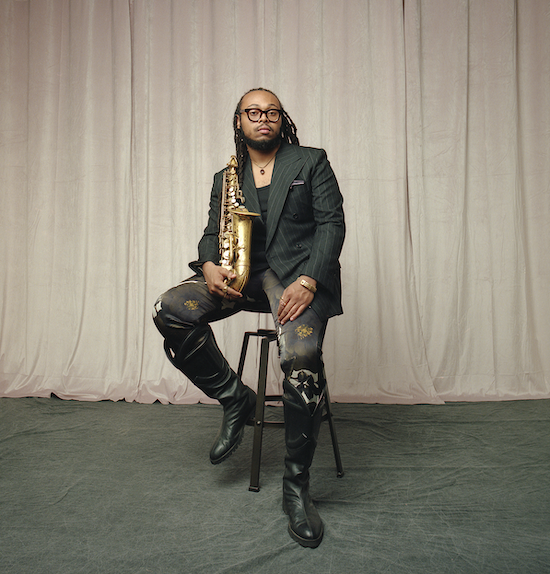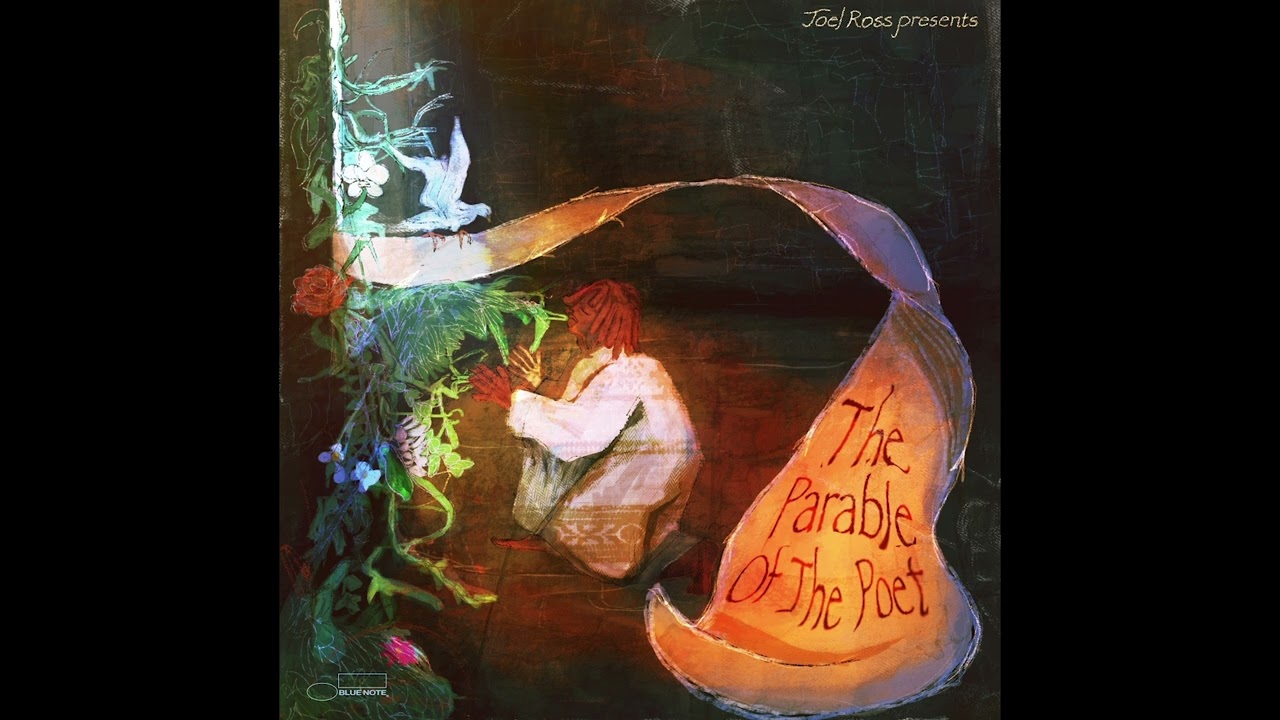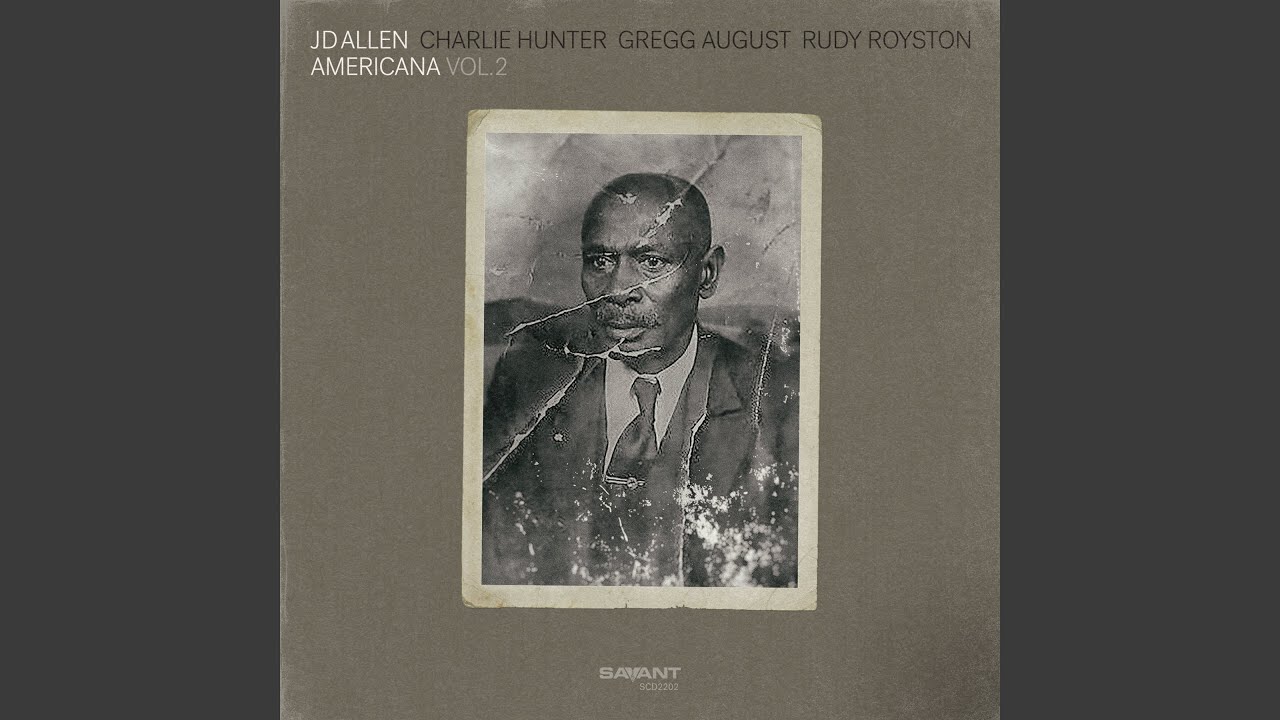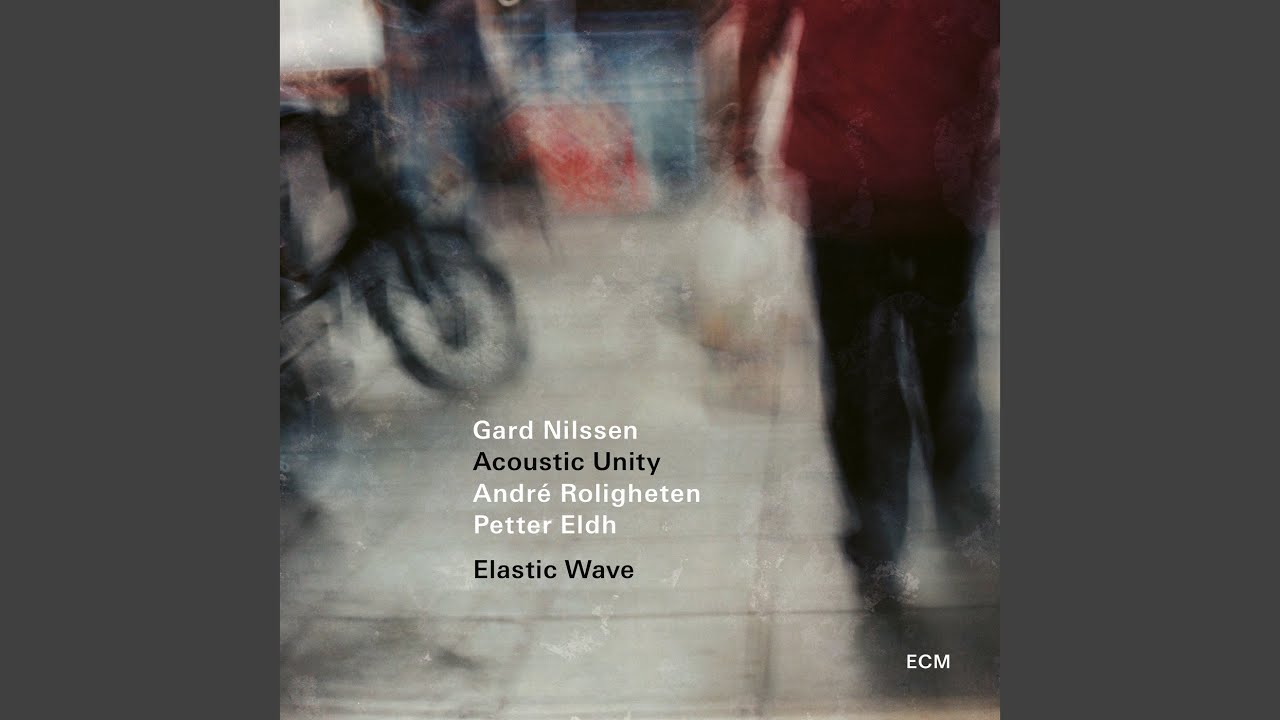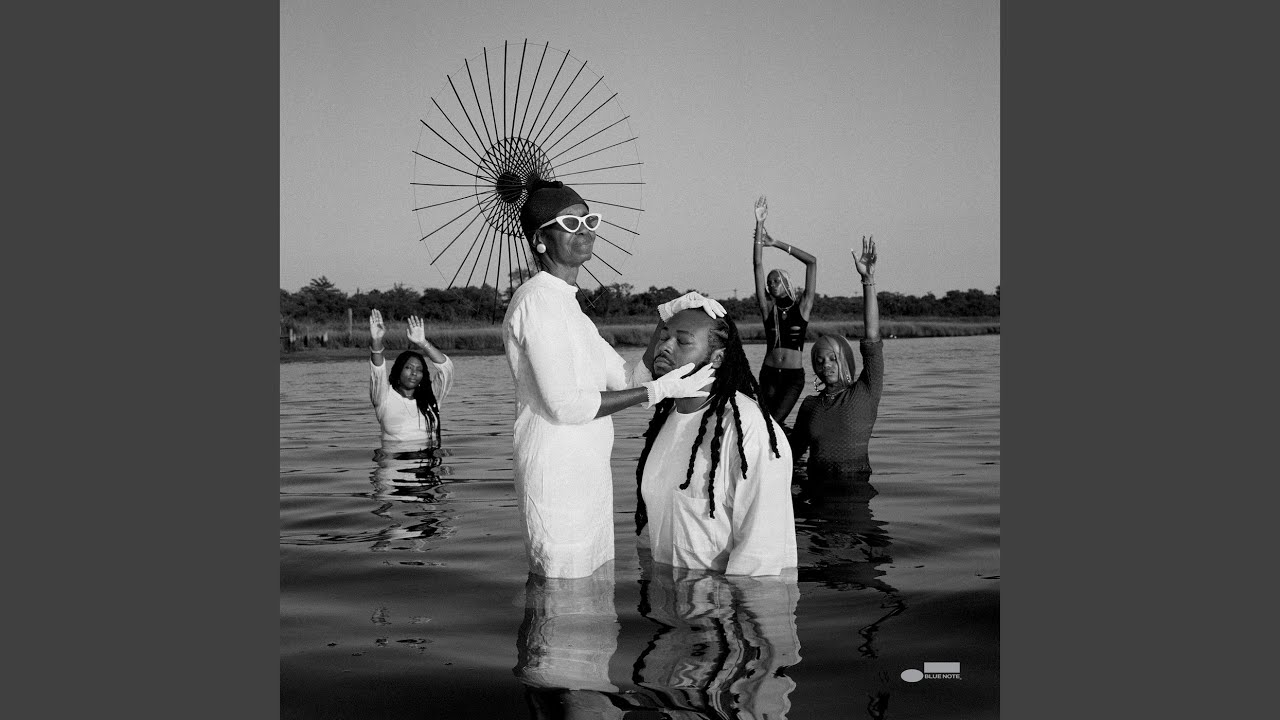Immanuel Wilkins by Rog Walker
Last night I caught a remarkable, mostly improvised performance by reedists Tobias Delius and Ab Baars here in Berlin within the cozy confines of KM28. The musicians are probably best known as long-time members of the ICP Orchestra, where they have built an astonishing rapport over decades of work together and the set revealed an almost telepathic degree of communication. Their performance ended with a gorgeous reading of ‘De Sprong, O Romantiek der Hazen’, a ballad by ICP co-founder Misha Mengelberg, that delivered velvety splendor, but the rest of the music was all made up on the spot.
They juggled between clarinets and tenor saxophones—and Baars played shakuhachi on one piece—but regardless of what they were playing at any particular time, they found endless ways to fall in line and deliver spontaneous counterpoint, playing against each other to generate friction and push things forward. They repeatedly anticipated where the other fellow might be going next, balancing a genuine sonic communion and navigating unexpected turns and curves in real-time with astonishing grace and soul. It was one of the best concerts I saw in 2022.
I love listening to recorded music, but this year I was reminded over and over that in most cases, nothing can match the intimacy and immediacy of music in the live setting. A few weeks ago I caught a performance by Die Hochstapler, a fantastic freebop quartet featuring French horn players Louis Laurain and Pierre Borel, German percussionist Hannes Lingens, and Italian bassist Antonio Borghini. I love the two complementary albums they released this year. Beauty Lies features 25 short fragments and tunes, a kind of tool kit for the music presented on the other album, Within, a document of a live performance I was lucky enough to witness at the tiny, sadly defunct Berlin space Au Topsi Pohl. The group fashions spontaneous sets in which they draw upon those ideas from the first album, with fast-paced, surprise-laden shifts directed by all four musicians. Sometimes they agree, sometimes they don’t, but they perpetually land on dynamic ways to move forward. The performance on the album is superb, and I have enjoyed listening to it, but after seeing the group play live again, where the real-time decision making by the musicians is clearly visible and their positioning on the stage allows them to assume greater freedom and demonstrate how the quartet can break into small sub-groupings, there’s no question which experience is more profound and meaningful.
Sadly, even in a corner of the music world as commercially marginal as jazz and improvised music, the vagaries of geography, festival programming, and the media’s often lemming-like tendencies provides the opposite of meritocracy. Still, we deal with it because when things align, few things can provide the same sort of human ingenuity and heart. Below are my ten favorite recordings of jazz and improvised music from 2022, followed by a few additional observations and under-the-radar developments.
10. Jacob Garchik – Assembly
(Yestereve)
The ceaselessly inventive trombonist, composer, and arranger Jacob Garchik used technology, scale, and collision to create this potent, forward-looking homage to classic bebop verities. The excellent line-up – with drummer Dan Weiss, bassist Thomas Morgan, pianist Jacob Sacks, and reedist Sam Newsome — plays the shit out of the leader’s thorny yet ebullient tunes, at once reinforcing the renewable potency of bebop practices and blazing a new trail of possibilities.
9. Lisa Ullén, Elsa Bergman, Anna Lund – Space
(Relative Pitch)
Stockholm possesses one of the deepest, most open-ended, and exciting musical communities in the world these days, but sadly it seems to be overlooked both there and abroad. This electrifying fully improvised piano trio came together when its members – pianist Lisa Ullén, bassist Elsa Bergman, and drummer Anna Lund – worked together in the Anna Högberg Attack!, and they’ve developed their own furious sound marked by febrile tension and release, as the group persistently pushes its spontaneous explorations to the edge of the abyss, forever maintaining its composure.
8. Joel Ross – The Parable of the Poet
(Blue Note)
An album of luminescent, spiritual beauty, The Parable of the Poet finds vibraphonist Joel Ross excelling with meditative serenity, building a carefully measured atmosphere in which improvisation feels invisible. Instead, the airy arrangements and relaxed tempos convey something else, carving out a space for contemplation and beauty without being tied down to any single vibe. Like saxophonist Immanuel Wilkins, who’s been featured on all three of Ross’ albums, the vibist moves easily between tradition and innovation, rejecting any kind of boundary line between past and future. It’s all in there.
7. J.D. Allen – Americana Vol 2
(Savant)
Few jazz musicians devoted to the tradition have found so many ways to tweak familiar forms and shapes with the personality and depth of tenor saxophonist J.D. Allen. This sequel to his 2016 album reunites him with his best rhythm section – drummer Rudy Royston and bassist Gregg August – on another program of country and blues standards. The trio is joined on eight of the eleven tunes by guitarist Charlie Hunter, who brings extra sonic heft, adding twangy low-end and giving the saxophonist an excellent foil for his rangy improvisations. Few artists have so consistently reminded me of the fundamental joys of jazz.
6. Punkt.Vrt.Plastik – The Zürich Concert
(Intakt)
Over the last half-decade no piano trio has provided me with greater thrills than Punkt-Vrt.Plastik, a gritty, wildly angular unit featuring Slovenian pianist Kaja Draksler, bassist Petter Eldh, and drummer Christian Lillinger. This maniacal live date captures the group at its best, splicing-and-dicing its jagged themes with breathless precision and sideways imagination. Eldh and Lillinger form one of the best rhythm teams in jazz right now, playing with complex grooves like jacked-up scientists perpetually experimenting with new shapes. Draksler gamely joins in, unspooling broken glass patterns smeared by a microtonal effect, but she also imparts melodies of elusive beauty at the same time.
5. Jeff Parker – Mondays At The Enfield Tennis Club
(Eremite/Aguirre)
Guitarist Jeff Parker established his versatility and imagination, both leading his own jazz projects and playing in Tortoise, long ago, so it shouldn’t come as a surprise that he’s opened up yet another new artistic pathway. He formed this groove-oriented improvising quartet with drummer Jay Bellerose, bassist Anna Butterss, and reedist Josh Johnson for an ongoing weekly residence at the titular Los Angeles venue, and these four side-long excursions reveals how masterful the band has become at sculpting long-form jams that undergo a constant state of evolution. It’s head-nodding stuff, but its depth extends well beyond subtle rhythmic invention.
4. Rob Mazurek Quartet – Father’s Wing
(Rogue Art)
Cornetist and composer Rob Mazurek – who also contributes electronics and howling, primal scream vocals here – is a relentless seeker, perpetually building new tropes without trashing past accomplishments. He’s found a kind of modular way or making work, applying some of his favorite methods and themes to changing ensembles, and few are more powerful than this quartet with pianist Kris Davis, bassist Ingebrit Håker Flaten, and drummer Chad Taylor. The music was recorded as an homage to his late father, and the sense of loss is as real as the spirit of perseverance.
3. Gard Nilssen Acoustic Unity – Elastic Wave
(ECM)
This agile Scandinavian trio struck gold with their latest album, with indelible themes composed by all of its members – drummer Gard Nilssen, reedist André Roligheten and bassist Petter Eldh – providing potent grist for spirited, soulful improvisations and infectious group interplay.
2. Immanuel Wilkins – The 7th Hand
(Blue Note)
This young Philadelphia saxophonist and composer has grown in leaps and bounds in the last few years, and his second album reveals a maturity well beyond his 24 years. He build this new suite to illustrate his sense of religious devotion through sound, a searing excursion of ebb-and-flow through post-bop and gospel influences that climaxes with a jaw-dropping, ecstatic 26-minute “Lift.”
1. Mary Halvorson – Amaryllis/Belladonna
(Nonesuch)
Mary Halvorson is already well-established as the leading improvising guitarist of her generation, but over the years her abilities as a composer have been expanding steadily. This set of complementary albums – the first made by a dynamic, hard-driving sextet, the second featuring the guitarist and Mivos Quartet – reveals a huge leap. I’m as excited by what could come next as much as I am by this fantastic music.
…
In late 2020 Matthew Shipp published an essay on a particular, idiosyncratic group of fellow pianists belonging to a group he dubbed Black Mystery School. He wrote: “Mystery School posits an alternative touch – something that does not directly fall within the mainstream’s easily digestible paradigm of being able to play the instrument, even though the practitioners of the Mystery School are obviously highly skilled virtuosos whose touch, language, and articulation are extremely hard to copy.” All but one of the musicians Shipp cites are Black, but does say that race need not be an obstacle. Among the people he names are Thelonious Monk, Herbie Nichols, and Hasaan Ibn Ali, all of whom are interpreted on one of the year’s greatest albums, The Hasaan, Hope & Monk Project (Driff), by the Pandelis Karayorgis Trio. The Boston-based pianist has long revealed an affinity for idiosyncratic keyboardists of the bebop era, with previous work exploring Lennie Tristano.
I’d also include a recent European piano trio called Ouat in this category. They bookended the year with two fantastic albums. The first, Elastic Bricks (Umlaut), is comprised of original tunes by the group’s bassist Joel Grip and pianist Simon Sieger – the group also includes drummer Michael Griener – all of whom retain this general ‘Black Mystery’ aesthetic model in various ways while sounding rather contemporary in tone and melody. Equally strong is The Strange Adventures Of Jesper Klint, an end-to-end reimagining of Swedish pianist Per-Henrik Wallin’s brilliant album Coyote, which posthumously argues for, at least, his adjacency to this coterie. Both of these trios fall in and out of Shipp’s definition, which he acknowledges to be idiosyncratic. I think the value of his judgment, though, is identifying a previously unconsidered lineage that both retains and values history, but works outside of it innovative, deeply personal ways.
That brings up the singular Oxford keyboardist Pat Thomas – of [ahmed] fame – who released a second survey of Duke Ellington music with Pat Thomas Plays the Duke (New Jazz And Improvised Music), following a 2019 digital release from Café Oto. These pieces feel like they’ve fully become part of his being, which permits him to warp, invert, stretch, and abstract the ravishing ballad-heavy selection in exactly the way mentioned above. I’m not a purist, but I can’t deny how satisfying it can be when those poles come together.

